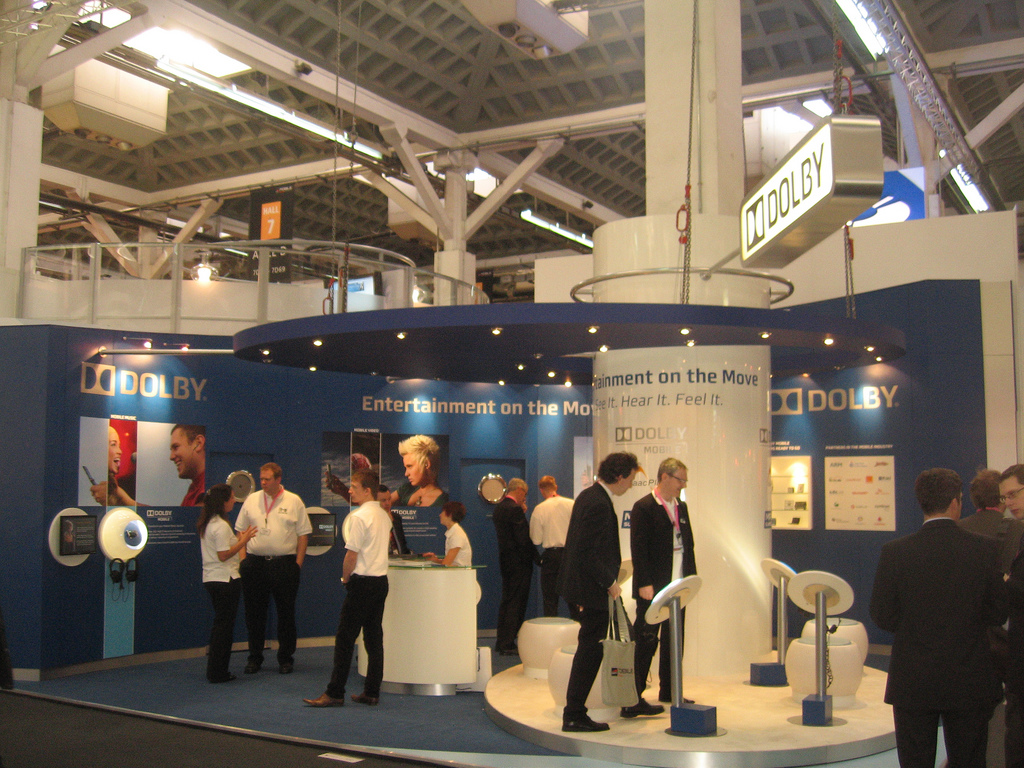Can Dolby transform sound on the move?

Dolby has officially launched its mobile phone sound enhancement tech called, unsurprisingly, Dolby Mobile. We caught up with Dolby at last week’s Mobile World Congress expo to find out the raison d’etre for the new launch and Dolby’s hopes for it.
Dolby Mobile is an audio processing technology platform designed to “take any content whether stereo music videos, stereo movie videos or stereo to stereo tracks and do something better with [them],” explains Andy Dowell, Dolby’s sales director .
Dowell says that our phones, with their ever-expanding memories, are becoming personal repositories for high quality video content. And, with features such as Nvidia’s 720p-supporting APX 2500 chip being launched, it’s not hard to see his point of view.
“At the end of the day the flat stereo experience you get with [modern mobiles] is not matching the screen size and what you’re watching.”
With the new platform, Dolby is hoping to “resolve some of the downfalls of audio on a device like this,” said Dowell, showing us video content on a Nokia N95 8GB. The pre-looped video was designed to show Dolby Mobile at its best but before long we were ushered to a selection of other mobiles using Dolby Mobile technology. There, we listened to a selection of music in standard mode and then enhanced with Dolby Mobile, which we could turn on and off at our leisure. The effect is dramatic and, as promised, boosts the quality of the sound a surprising amount.
As its name suggests, the new technology platform is aimed squarely at the mobile phone arena, but Dolby hopes the technology could also be adopted in MP3 players and other portable media devices.
Making the experience immersive
Sign up for breaking news, reviews, opinion, top tech deals, and more.
“What we think we can do with Dolby Mobile is two things,” says Dowell. “One is we can make the experience more immersive by taking the stereo sound and converting that into a surround sound experience within the chip on the device. That surround sound signal is passed straight away to a virtualiser that gives you this great out of head experience.”
“When you’re listening to stereo music normally, the image is completely between your two ears, inside the middle of your head,” explains Dowell. “But if you’re listening to music at home or in your car, the image is outside your head. And to make it more immersive and more lifelike you’ve got to try and take that image built up between your two ear drums and virtualise it so it seems outside of your head.”
As we all know, the bass response of mobile devices is usually not that hot. It could be the headphones or the actual device itself, something Dolby is acutely aware of. “We boost the bass. Now, bass boost seems like an easy thing to roll off the tongue but if you do bass boost badly you start to get into… problems.” [If you] start to drive bass [and] the hardware falls over, it’s just going to distort and sound crap. So at the end of the day we actually work with the base within the tolerance of the hardware.”
The other thing the Dolby Mobile technology has within it is a high frequency enhancer. “If you take some compression technology like Windows Media Audio…and crank them down too low, they start to fall over a bit.
“The enhancer helps to restore some of the things that have suffered in the encoding process. Everything gets resolved. The image gets resolved, the base gets resolved, and the high frequencies get resolved, turning it into a great multimedia experience rather than a good multimedia experience.”
Dowell also showed us aacPlus, a high-quality, highly efficient audio compression format designed for download, streaming, and broadcast applications on mobile phones. We were played a song by The Killers, parts of which were encoded in different codecs of varying bitrate. Aside from the original, we were played portions of the track encoded in 160kbps MP3 and 148kbps AAC followed by aacPlus encoded at just 48kbps. To our ears, the difference was not perceptible.
Dolby also demonstrated a prototype device with Dolby Mobile built on Texas Instruments' popular OMAP platform.
Dan (Twitter, Google+) is TechRadar's Former Deputy Editor and is now in charge at our sister site T3.com. Covering all things computing, internet and mobile he's a seasoned regular at major tech shows such as CES, IFA and Mobile World Congress. Dan has also been a tech expert for many outlets including BBC Radio 4, 5Live and the World Service, The Sun and ITV News.